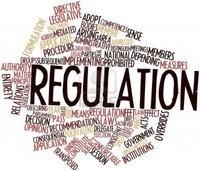The Sustaining Generic Medicines Markets in Europe report (April 2006), produced by the Research Centre for Pharmaceutical Care and Pharmaco-economics and authored by Professor Steven Simoens and Ms Sandra De Coster, offers a country-by-country analysis of generics markets in Europe and discusses factors both hindering and aiding the development of generics markets.
In the report, countries are grouped according to the status of their generics market, as being either developing or mature. Countries that were classified as having a developing generics market all had a generics market share of less than 20% at the time of study.
The table depicts strengths and weaknesses of policy tools in developing generic medicines markets.
Further details on each country, including a detailed account of their generics markets and specific advice, may be found in the report.
Table: Strengths and weaknesses of generics markets in developing countries
| Country
|
Strengths
|
Weaknesses
|
| Austria
|
-Since 2004, substantial price differences between originator and generics in developing markets stimulate market entry
|
-In the 1990s, the Austrian generics market suffered from the low level of medicine prices, reductions in the price level of originator medicines, and limited price differences between originator and generics -Few incentives exist for physicians to prescribe generics -Pharmacists are financially penalised for dispensing generics
|
| Belgium
|
-Generics use has been stimulated by the introduction of an RPS
|
-Successive reductions of the RP and the guarantee of absolute pharmacist margins threaten the economic viability of the generics market -Physicians have few incentives to prescribe generics -There are no incentives for pharmacists to dispense generics
|
| France
|
-Some policy measures to encourage physicians to prescribe generics have been taken in recent years -Substitution of generics for originator medicines is financially attractive to pharmacists
|
-In the 1990s, the French generics market was inhibited by legislation extending the period of patent protection, low medicine prices, the prescription of brand-name medicines by physicians, and a financial disincentive for pharmacists to dispense generics -Generics have tended to lose their price advantage as compared with originator medicines as a result of the RPS -Patients have no financial incentive to buy generics
|
| Italy
|
-Information campaigns were run in 2001 and 2005 to raise patient awareness of generics (effectiveness was not reported, however)
|
-The existence of a market of copies and the extension of patent coverage posed barriers to the development of the Italian generics market -Setting the RP at the level of the cheapest generic medicine inhibits generics entry, especially when considered in combination with the low volume of generics consumption -Physicians face few incentives to prescribe generics -Pharmacists are financially penalised for dispensing generics
|
| Portugal
|
-Portugal developed a successful generics policy by increasing reimbursement of generics (until October 2005) by encouraging physicians to prescribe by INN and by allowing generics substitution by pharmacists
|
-Regulation requiring that generics are at least 35% cheaper than originator medicines and setting the RP at the level of the most expensive generic medicine stimulates companies to launch generics for expensive active substances and limits the price competition between generics companies -Physicians face few incentives that influence their decision to permit or forbid generics substitution -Pharmacists are financially penalised for dispensing generics
|
| Spain
|
|
-Historically, the Spanish generics market has been small due to the existence of a developed market of copies and low medicine prices -Competition created by the 2000 generics medicines policy benefitted pharmacists rather than patients, thus inhibiting demand for generics -The 2003 generics medicines policy incited companies to reduce prices of originator medicines to RPs that are set close to marginal costs, thus limiting the profitability of and demand for generics -Few incentives exist for physicians to prescribe generics -Pharmacists are financially penalised for dispensing generics
|
INN: International Non-Proprietary Names; RP: reference price; RPS: reference-pricing system
Based on the Sustaining Generic Medicines Markets in Europe report (April 2006). Strengths and weaknesses presented in the report were used to summarise the key factors aiding or hindering the development of the generic medicines market in that country.
Related articles
Savings from generic medicines use
Recommendations to strengthen generic medicines markets
Policies that advance the use of generic and biosimilar medicines
Recommendations for developing generic medicines markets
Recommendations for mature generic medicines markets
Strengths and weaknesses of developing mature medicines markets
Overview of the Sustaining Generic Medicines Markets in Europe
Reference
Simoens S, De Coster S. Sustaining Generic Medicines Markets in Europe. April 2006.








 0
0











Post your comment